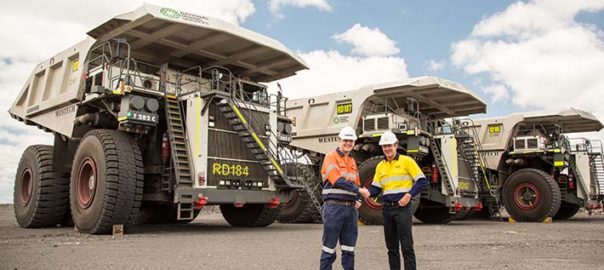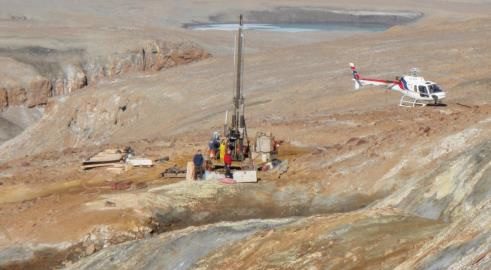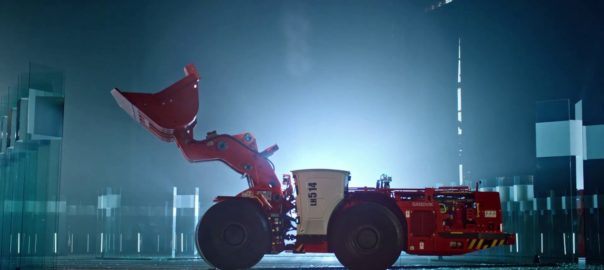The delivery of five Liebherr T 282 C haul trucks to BHP’s Peak Downs coal mine in central Queensland, Australia, marked a milestone for the original equipment manufacturer, being the last ultra-class machines to come off the production line at the factory in Virginia, USA.
National Mining Services recently purchased the five trucks and rented them to BHP. The machines were built over a period of about three and a half months.
The delivery was reported earlier this month by National Mining Services, but Liebherr put together a press release of its own in recognition of the milestone.
The 363 t payload class T 282 C truck will now officially only be produced by Liebherr as the T 284. The T 284, first introduced at MINExpo 2012, continues to be the lightest (lowest vehicle weight) and most capable (highest payload) ultra-class mining truck while offering reduced fuel consumption, delivering over 4,000 hp (2,983 kW) of power, according to Liebherr.
National Mining Services has also recently purchased an R 996 B Hydraulic Excavator, which is working in Western Australia for Fortescue Metals Group at the Christmas Creek iron ore mine. This machine is designed for the best mechanical force distribution, with the production-tailored attachment delivering high digging and lifting forces, according to Liebherr.











